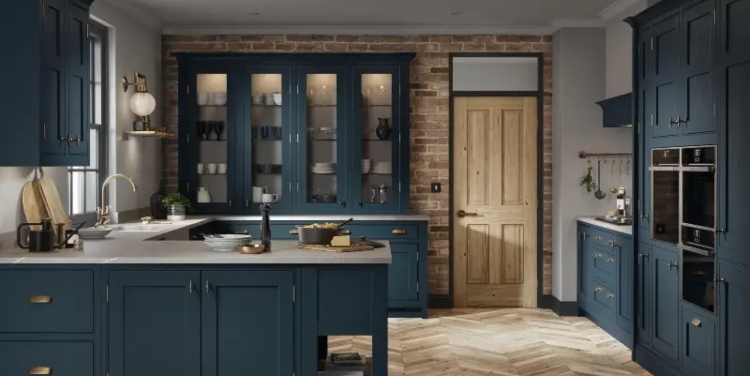In the tapestry of interior design, the Shaker style stands out for its simplicity, functionality, and timeless elegance. Born out of the Shaker movement in the late 18th century, this style has transcended its era to become a beacon of modern living. Its core principles of utility, honesty in construction, and minimalist aesthetics make it a perennial favourite among those who value a serene and uncluttered living space. This article delves into the Shaker style, exploring its origins, characteristics, and how it seamlessly integrates into contemporary homes.
Origins of the Shaker Style
The Shaker style originated with the United Society of Believers in Christ’s Second Appearing, commonly known as the Shakers. This religious sect, which emerged in the 1770s in England before establishing settlements in America, espoused values of simplicity, celibacy, and communal living. Their furniture and architecture mirrored these principles, focusing on functionality and craftsmanship over decoration or ornamentation. The Shakers believed that making something well was in itself an act of prayer, leading to the creation of pieces with clean lines, durability, and practicality.
Characteristics of Shaker Design
At the heart of Shaker design lies the principle of form following function. This is evident in the straightforward construction and lack of unnecessary adornment in Shaker furniture and interiors. Key characteristics include:
- Simplicity: Shaker designs are known for their clean lines and unpretentious forms. There is a deliberate avoidance of excess ornamentation, with the beauty of the pieces often arising from their utility.
- Craftsmanship: Despite the simplicity, a high premium is placed on craftsmanship and quality materials. Shaker furniture is typically made from hardwoods such as maple, cherry, or pine, with a focus on durability and longevity.
- Functionality: Every element in Shaker design has a purpose. Furniture pieces are practical, with many designs featuring innovative solutions for storage and organization, such as built-in drawers and cabinets.
- Minimalist Aesthetics: The Shaker style’s minimalist approach favours a muted palette and natural finishes, highlighting the materials’ inherent beauty and creating a tranquil and inviting space.
Shaker Style in Modern Homes
The Shaker style’s emphasis on minimalism and functionality resonates strongly with contemporary design philosophies. As modern living spaces become smaller and more streamlined, the Shaker approach to design offers smart solutions and a calming aesthetic. Here’s how the Shaker style can be incorporated into modern homes:
- Furniture: Shaker chairs, tables, and cabinetry can add a timeless elegance to any room. Their clean lines and solid construction make them versatile pieces that blend seamlessly with other design styles.
- Cabinetry: Shaker-style cabinetry, with its characteristic recessed panel doors, is a popular choice in modern kitchens and bathrooms. It offers a balance of classic aesthetics and contemporary practicality.
- MDF Shaker Doors: A contemporary take on traditional Shaker craftsmanship, MDF (Medium Density Fibreboard) Shaker doors provide a cost-effective and durable option for those looking to incorporate the Shaker style into their homes. These doors maintain the classic, clean lines of Shaker design but are more resistant to warping and cracking, making them ideal for areas with high humidity or temperature fluctuations.
- Colour and Décor: Neutral colours, such as whites, greys, and earth tones, are synonymous with Shaker interiors. These hues enhance the sense of space and light in a room, aligning with modern preferences for bright and airy living spaces. When it comes to décor, the Shaker principle of “less is more” suggests choosing a few meaningful and functional items over an abundance of decorative pieces.
The Enduring Appeal of Shaker Style
The Shaker style’s enduring appeal lies in its ability to create harmonious and functional spaces that are both comforting and aesthetically pleasing. In an age where the pace of life is ever-accelerating, and homes are inundated with technology and clutter, the Shaker philosophy of simplicity and mindfulness offers a sanctuary from the outside world. It is a style that encourages us to prioritise quality over quantity, functionality over form, and to create homes that are not just places to live, but spaces where we can truly thrive.
Conclusion
The Shaker style’s journey from the humble dwellings of a religious sect to the forefront of modern interior design is a testament to its timeless appeal and adaptability. Its principles of simplicity, functionality, and craftsmanship offer a counterpoint to the complexity and transience of contemporary life, making it a perennial favourite among those seeking a serene and authentic living space. As we continue to navigate the challenges of modern living, the Shaker style stands as a beacon of tranquility and a reminder of the enduring value of simplicity in design.
David Prior
David Prior is the editor of Today News, responsible for the overall editorial strategy. He is an NCTJ-qualified journalist with over 20 years’ experience, and is also editor of the award-winning hyperlocal news title Altrincham Today. His LinkedIn profile is here.













































































